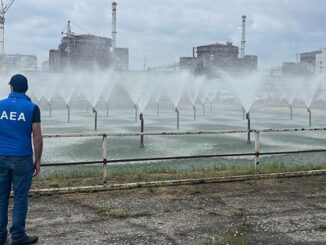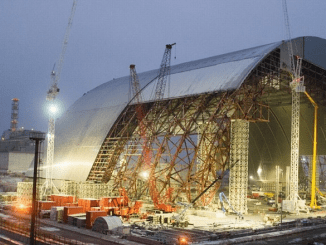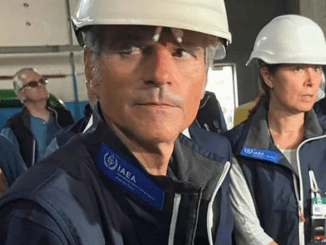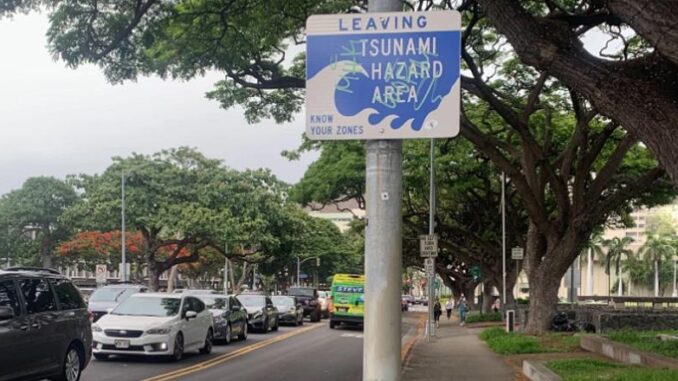
HONOLULU, Hawaii, July 31, 2025 (ENS) – The tsunami advisory for Hawaii has been lifted after a massive earthquake just off Russia’s Far East Pacific coast put the entire region on high alert. Residents and visitors around the Pacific held their breath as tsunami waves rippled across the vast ocean.
Tsunami warnings for Japan and the U.S. west coast have now also been downgraded to advisories.
“Tsunami wave heights across the state of Hawaii are now below advisory levels and are continuing to diminish,” the Pacific Tsunami Warning Center said. “Small sea level changes and strong or unusual currents may persist for several additional hours in some coastal areas.”
Tsunami alerts were activated in coastal countries throughout the Pacific Ocean on July 30, at 11:24 local time, when a powerful 8.8 magnitude earthquake struck off the east coast of the Kamchatka Peninsula in the Russian Far East.
The Kamchatka quake turned out to be among the 10 strongest ever recorded – tied for sixth place. It was the largest since March 11, 2011, when a 9.1 magnitude quake and tsunami waves struck the east coast of Japan, killing more than 15,000 people and damaging the Fukushima nuclear power plant, causing a nuclear meltdown. Decommissioning work is still ongoing at Fukushima, which was also evacuated.
The Kamchatka quake on July 30 damaged buildings on the remote Russian peninsula. Officials on Kamchatka said several people were hurt, including a hospital patient injured while jumping out of a window. All were reported to be in satisfactory condition.
The Russian Emergencies Ministry reported no casualties.
The U.S. Geological Survey, USGS, said in a statement that the earthquake had its epicenter 20 miles deep beneath the ocean off the coast of the tip of the Kamchatka Peninsula, and 119 kilometers (74 miles) southeast of its largest city, Petropavlovsk-Kamchatka.
In the Kamchatka region a state of emergency was declared and local authorities reported that about 2,700 residents were evacuated.
In Severo-Kurilsk, the main city of the Kuril Islands, which lie between Kamchatka and Japan, tsunami waves as high as six meters (over 18 feet) flooded the fishing port and swept fishing boats out to sea.
The tsunami flooded part of the city, another threat like the one that nearly destroyed the city 73 years ago. Severo-Kurilsk lost more than one-third of its 6,000 residents in a 1952 earthquake.
Lives were saved because this time Severo-Kurilsk was evacuated.
Ring of Fire Volcano Erupts
As if all that were not tragedy enough, shortly after the quake and aftershocks rattled the area, the Klyuchevskoy Volcano on the Kamchatka Peninsula began erupting.
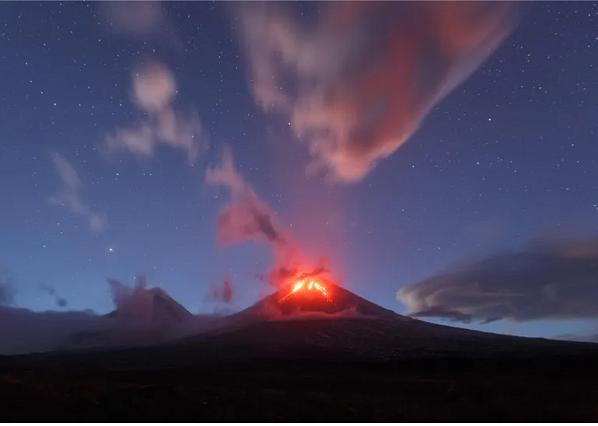
Klyuchevskoy, which rises 15,597 feet (4,754 meters) above sea level, is the tallest active volcano in Asia and Europe, according to the U.S. National Aeronautics and Space Agency, NASA. The peninsula is a hot spot for geologic activity due to its position on the Pacific Ring of Fire, NASA said.
A tectonic belt of volcanoes and earthquakes, the so-called Ring of Fire is about 40,000 km (25,000 miles) long and up to about 500 km (310 miles) wide. It surrounds most of the Pacific Ocean.
The Ring of Fire contains between 750 and 915 active or dormant volcanoes, around two-thirds of the world total.
Just 450 km (280 miles) to the north of the regional capital city on the Kamchatka peninsula, the city of Petropavlovsk-Kamchatka. sits the Klyuchevskoy volcano, now spitting fire and ash.
Most residents of Japan’s eastern seaboard were ordered to evacuate, as were parts of Hawaii.
Hawaii Governor Josh Green, MD declared a state of emergency, activating the Hawaii National Guard for disaster relief.
Communities along South America’s Pacific coast carried out evacuations and closed beaches.
After the First Shock
Eleven earthquakes shook the area off the coast of Kamchatka within an hour, the Unified Geophysical Service, UGS, of the Russian Academy of Sciences said.
According to Russian seismologists, the magnitude of the aftershocks ranged from 4.2 to 5.5.
Scientists say the Kamchatka quake happened on a “megathrust fault” when the Pacific Plate moved beneath the North American Plate. Megathrust faults occur at convergent plate boundaries, where one tectonic plate is forced beneath another. The earthquakes are caused by slip along the thrust fault that forms the contact between the two plates.
Megathrust faults are well known for generating large earthquakes and tsunamis.
The major city of Petropavlovsk-Kamchatsky, population roughly 165,000, was protected from big tsunami waves by its location on Avacha Bay.
Is the Sun Involved?
The earthquake that rocked Russia’s Kamchatka Region early on Wednesday may have been influenced by increased solar activity, a Russian expert told the Russian news agency TASS.
“Earthquake activity has been increasing [in recent years] in Turkey, Myanmar, and now in Kamchatka,” Yelena Kobeleva, director of the Baikal branch of the Unified Geophysical Service of Russia’s Academy of Sciences, said.
“A magnitude-5 earthquake recently occurred in Kazakhstan, although such quakes rarely happen there. I agree with many of my colleagues who attribute this to a surge in solar activity. There are frequent announcements of geomagnetic storms and reports about solar flares,” she explained.
Kobeleva noted that tectonic processes that reshape the Earth’s surface are influenced by solar activity. At the same time, she said, it is unlikely that the quake was driven by man-made factors. “We do not have any large-scale mining of deposits, such as in Kuzbass [the Kuznetsk Coal Basin, one of the largest coalfields in Russia] and Yakutia, nor are there any reservoirs, such as those in the Bratsk or Ust-Ilimsk areas. Therefore, it becomes difficult to link it to man-made factors; it’s just nature,” Kobeleva said.
Kamchatka can experience earthquakes of several types – tectonic, submarine, and volcanic – simultaneously due to its location and geological and geophysical characteristics, she said. “According to the latest data, the [epicentral] distance is 17 km. The quake occurred in Avacha Bay, but it was shallow. The earthquake’s focal mechanism is yet to be clarified,” Kobeleva pointed out.
Quake Scare Compounded by a Typhoon
The Kamchatka quake coincided with Typhoon Co-May in China, the eighth tropical storm to hit China this year. Reacting to the destructive storm, Shanghai relocated more than 280,000 people, halted hundreds of flights and ferry services, and imposed speed limits on roads and railways as heavy rains poured down.
Landfall by Typhoon Co-May in the port city of Zhoushan in Zhejiang province was followed by warnings of a tsunami set off by the powerful Kamchatka earthquake.
On Tuesday, at least 30 people died as rainfall pounded Beijing, causing flooding, infrastructure damage and mass evacuations. President Xi Jinping urged all-out efforts to secure lives and property.
Thousands of residents and tourists were evacuated from northern China’s Tianjin municipality after the most severe flash flood in 70 years struck the region, inundating 13 villages and triggering a top-level emergency response.
Featured image:
© 2025, Environment News Service. All rights reserved. Content may be quoted only with proper attribution and a direct link to the original article. Full reproduction is prohibited.

